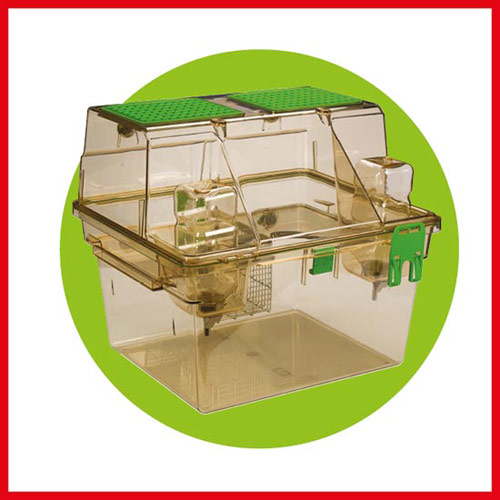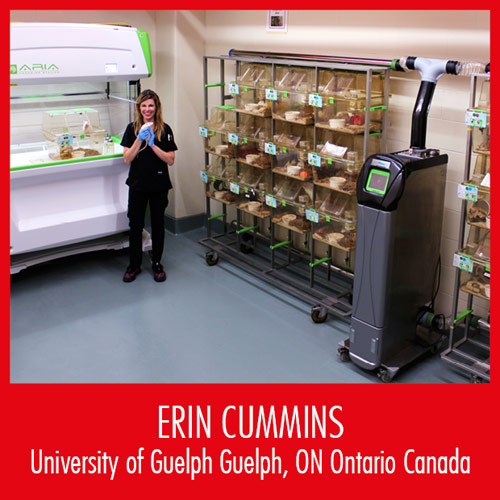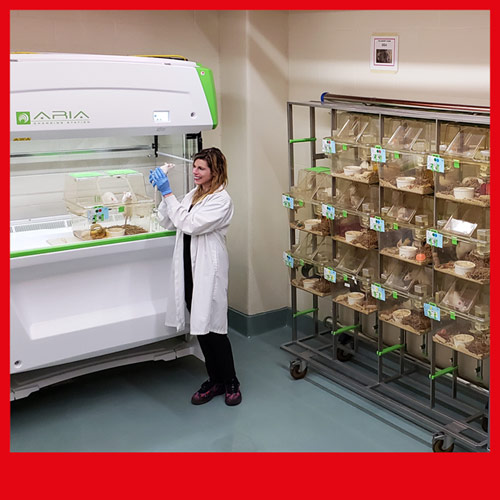
The current version of the Tecniplast website doesn't match your region. Please visit your local website to find information and offerings specific to your country.

The current version of the Tecniplast website doesn't match your region. Please visit your local website to find information and offerings specific to your country.

 DD is a cage specifically designed to maximize the welfare of rats with its 15,9” exclusive height, chosen by more than 100 vivariums who care for their animals’ welfare. Can you tell us about your expectation when you decided to test the DD?
DD is a cage specifically designed to maximize the welfare of rats with its 15,9” exclusive height, chosen by more than 100 vivariums who care for their animals’ welfare. Can you tell us about your expectation when you decided to test the DD?
We chose to test the DD individually ventilated cages as it best satisfied the following housing parameters required by a research team for their unique experimental design:
1) ample ground space for socially and environmentally enriched conditions;
2) containment of allergens;
3) ease of accessibility to animals and food; and
4) visibility.
After completing a pilot project wherein rats were pair-housed in conventional opaque shoebox cages, these key housing requirements were identified as desirable objectives to improve working conditions for the researchers and technicians, the welfare of the animals involved and, consequently, the scientific validity of the upcoming experimental study.
More specifically, due to the nature of the project, the rats are kept on a special powdered meal diet, show increased water consumption, have the potential to develop disease-specific symptoms of discomfort and are given frequent oral drug dosing. These conditions meant that the housing environment needed to be large enough to accommodate multiple chew items to wear down teeth, as well as group housing and other enrichment to improve welfare conditions for any rats expressing signs of disease-associated acute discomfort. The increased water consumption and subsequent urine output highlighted a need for individually ventilated cages to minimize exposure of the personnel to harmful aeroallergens, preferably without compromising accessibility to water and the cage interior for daily feed and drug dosing. Finally, to closely monitor animals for disease-specific symptomology, clear visibility of group-housed rats exhibiting natural species-specific behaviours (e.g., rearing, rough-and-tumble play, jumping, etc) for thorough and efficient daily health inspections was deemed imperative.
 Did final result of the test meet expectations? Which is the most important benefit you think the DD offer to users? Do you have specific recommendations for Lab Animal Facility Managers?
Did final result of the test meet expectations? Which is the most important benefit you think the DD offer to users? Do you have specific recommendations for Lab Animal Facility Managers?
The ground space, while not particularly large, is sufficient to accommodate three large male rats, multiple chew items (e.g., wooden blocks and nyla bones) and one shelter. One advantage of the DD cage design is the height. While many large rat cages on the market have introduced a second level to allow vertical movement for the rats, some of these are quite restrictive (e.g., narrow). In contrast, the mezzanine of the DD cages is spacious and provides extra room for the rats to carry-out a number of important species-specific behaviours (e.g., comfortably sleeping in groups, grooming, rearing, etc). Compared to other styles we’ve tried, the DD cage design and clarity maximizes visibility of the animals without undocking the cage and hence, disturbing these behaviours. Fewer interruptions to their behavioural repertoire make health assessments less stressful for the animal, as well as more comprehensive and timely; this is ideal when assessing post-operative recovery or disease progression in animal models. Furthermore, the design of the DD individually ventilated cage system dramatically reduces unpleasant odors and allergens throughout the room while maintaining many user-friendly functions provided by conventional caging. Both the location of the water on the cage exterior coupled with the front-facing hatch to access the food and rats serve to further minimize cage undocking during routine husbandry, thereby reducing unnecessary ergonomic strain on personnel. The latter is especially important as the DD cages are heavier when compared to the conventional shoebox cages, albeit far lighter than other individually ventilated cages we tested.
 While all elements of the DD caging system are advantageous to the user, we feel the most important benefit is the front hatch. At our facility, investigators have shown great interest in switching to individually ventilated cages in order to reduce their exposure to allergens.
While all elements of the DD caging system are advantageous to the user, we feel the most important benefit is the front hatch. At our facility, investigators have shown great interest in switching to individually ventilated cages in order to reduce their exposure to allergens.
However, the difficulties inherent in working with the heavier rat ventilated cages are a common concern.
Many researchers handle the animals on a daily basis for treatments or testing, and repeatedly docking and undocking large, cumbersome ventilated cages would only shift their worries of allergens to worries of injury. With the DD caging system, this apprehension is completely negated by the front hatch. Without having to undock and bear the full weight of the cage, rats can easily be retrieved from the housing unit for treatment, or placed in a transfer cage and brought to a testing room. For this reason alone, we strongly recommend other facility managers to try the DD system; just as we have, we suspect that both researchers and technicians alike will enthusiastically embrace the versatility and functionally afforded by these cages. And most importantly, the rats will love it too!
Massimo ASPESI
Tecniplast Canada General Manager